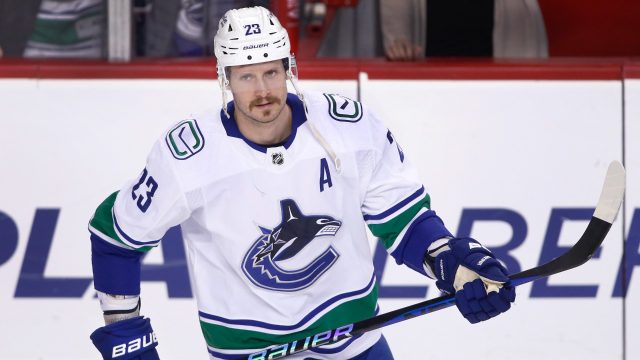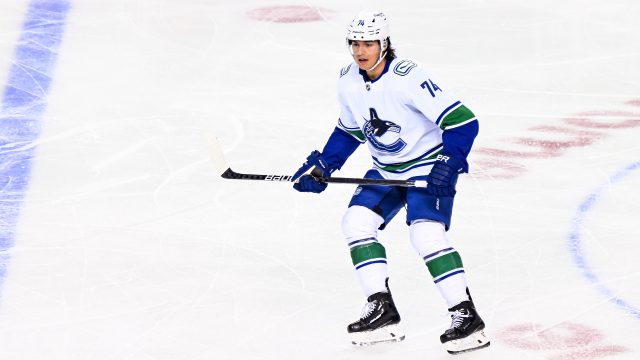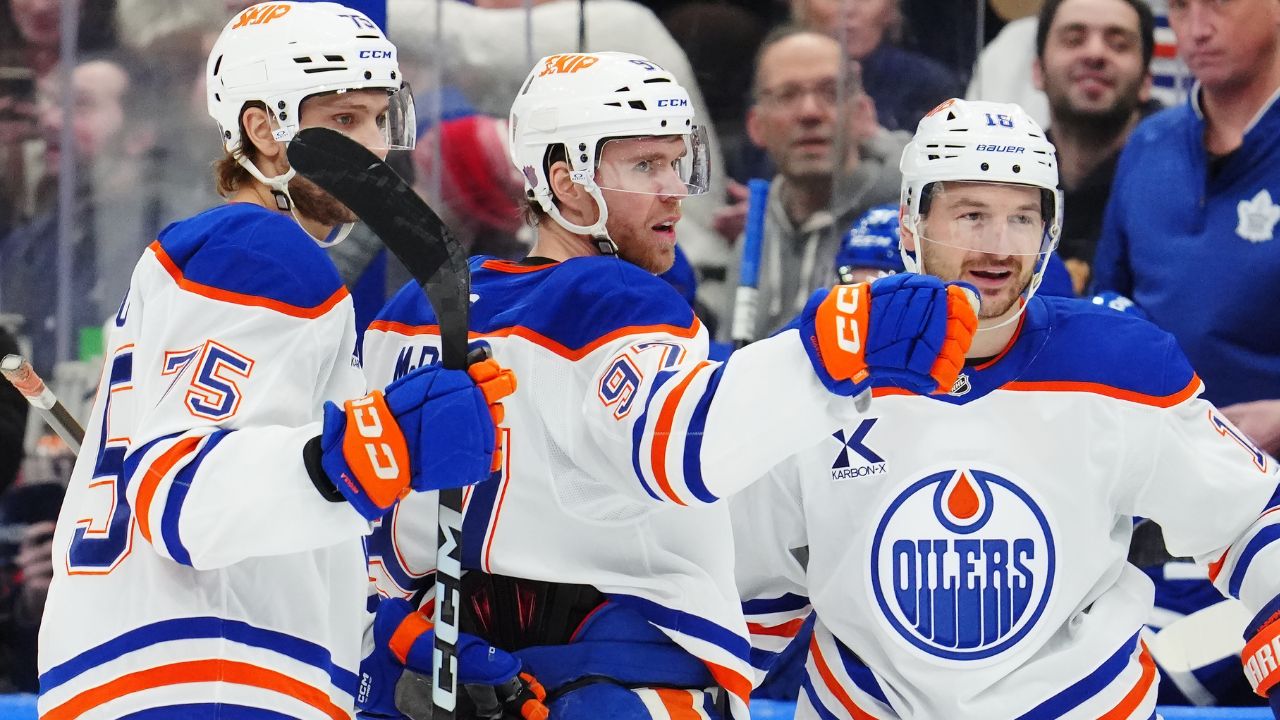
VANCOUVER — There were two astonishing aspects to the Vancouver Canucks’ $19.3 million USD buyout Friday of defenceman Oliver Ekman-Larsson.
One, that it occurred. And two, that so many people were upset by it.
Maybe Ekman-Larsson was far more popular than anyone knew. Apparently for some, the only thing worse than having Ekman-Larsson on the roster was having him bought out.
What everyone can agree on is that former general manager Jim Benning’s massive gamble on Ekman-Larsson turned into a giant mistake. One that current GM Patrik Allvin will be paying for in dead-cap money for the next eight years or however long he runs the National Hockey League team.
Acquired by Benning two summers ago in a blockbuster trade with the Arizona Coyotes, who dumped the final six years of the defenceman’s $66 million contract on Vancouver in exchange for a package that included the 2021 ninth-overall pick, Ekman-Larsson regressed alarmingly this past season and was owed $7.26 million by the cap-crunched team for the next four years.
With the Swede’s contract untradable, buying out Ekman-Larsson is as sensible as it is expensive.
But it was still a shock because the cost to Canucks owner Francesco Aquilini makes it the fifth-most expensive buyout in NHL history and, especially, because Allvin said at his year-end press conference in April that he did not intend to exercise buyouts.
“I just think that this group is just touching the surface of becoming a good team, so I don’t want to use buyouts if we don’t have to,” Allvin said after the Canucks missed the Stanley Cup Playoffs for the seventh time in eight seasons. “I don’t want to use buyouts that (are) going to affect us in a couple of years when this group is actually, hopefully, taking off. The intention is not using buyouts at this point.”
His comment seemed to contradict what Canucks president Jim Rutherford said in January. Rutherford told reporters that the organization must use all means available to shed contracts and create salary-cap space because “until we move those out, or until they expire, it’s going to be hard to make changes.”
The apparent reversal by Canucks management on Friday, the opening day of the league’s buyout window, may be due to Allvin’s inability so far to trade for cap flexibility by interesting other teams in players like Conor Garland and Brock Boeser without having to retain salary in transactions.
Allvin may not have “intended” to buy out Ekman-Larsson, but he understood the harsh and inescapable reality that there was no other way.
Buying out Ekman-Larsson provides enormous short-term relief. The cap savings to the Canucks next season, when he was owed $10.5 million in actual salary, is about $7.1 million. That’s nearly the entirety of the team’s $7.26-million cap charge (in the 2021 trade, the Coyotes retained the difference on the player’s full average salary of $8.25 million).
The Canucks’ cap savings in 2024-25 will be about $4.9 million, and the annual savings diminish after that. But three years from now, the salary cap — about to enter its fourth and final season of artificial suppression because players don’t like escrow — should be $100 million and the dead money won’t be nearly so onerous.
It’s hard to overstate how important the immediate savings are to the Canucks, who were already above next season’s projected salary cap of $83.5 million. According to CapFriendly.com, Vancouver suddenly has $6.4 million of cap space, although the effective spending room is actually $12.2 million if Canucks with careers in jeopardy, Tucker Poolman and Tanner Pearson, spend next season on Long-Term Injured Reserve.
There is, however, a massive gap in the Canucks’ blue line.
The OEL news came a day after the team announced defenceman Ethan Bear, a restricted free agent who has been in contract negotiations for months, could be out until Christmas after requiring shoulder surgery for an injury sustained with Team Canada at the world championship last month.
The Canucks have an elite first pairing on defence with Quinn Hughes and Filip Hronek and, internally, the organization has great confidence in American Hockey League graduates Christian Wolanin and Guillaume Brisebois, who performed well under new head coach Rick Tocchet during the last two months of the season.
The team also has a few intriguing prospects, including Filip Johansson, a 23-year-old former first-round pick of the Minnesota Wild who is coming to North America next season after developing impressively with Frolunda of the Swedish Hockey League.
But with Bear injured and veteran Tyler Myers, another player whose contract the Canucks are trying to shed, there is no apparent second pairing in Vancouver.
The cap space created by the Ekman-Larsson buyout should pay for two or three players, including a third-line centre that Allvin and Tocchet have identified as the team’s biggest need.
But Allvin must be wary of repeating Benning’s biggest mistakes: impatience and the eagerness to go all-in on free agency. The Canucks were one season away from cap relief when the former GM miscalculated on Ekman-Larsson, believing the then-30-year-old could still be an elite defenceman and taking on his salary to be rid of the final contract years of Antoine Roussel, Jay Beagle and Loui Eriksson, all of them previous free-agent mistakes.
To shed one year and $12 million of bad money, the Canucks took on Ekman-Larsson and a $43.6 million obligation over six years.
On Friday, Allvin found the only exit ramp he could on that debilitating contract. Free at last, the Canucks finally have a little cap space. For now.






